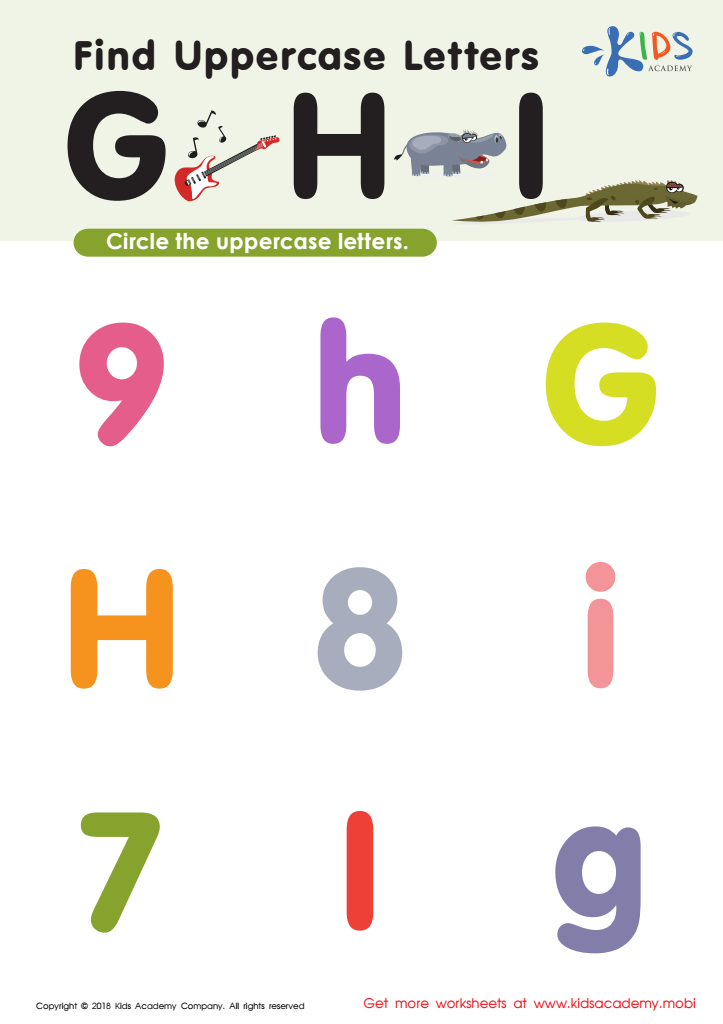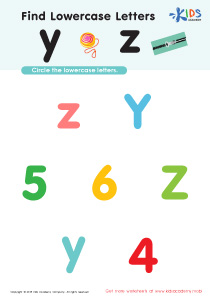Alphabet familiarity Normal Uppercase Letters Worksheets for 6-Year-Olds
4 filtered results
-
From - To
Enhance your child's alphabet knowledge with our Alphabet Familiarity Normal Uppercase Letters Worksheets, designed specifically for 6-year-olds. These engaging worksheets help children recognize, trace, and write uppercase letters with ease. Perfect for beginners, each worksheet combines fun illustrations and clear instructions, making learning an enjoyable journey. Your child will develop essential literacy skills, such as letter recognition and handwriting, preparing them for more advanced reading and writing tasks in school. Explore our diverse collection and watch your child triumph in mastering the alphabet while building a strong educational foundation. Visit us today!


Find Uppercase Letters G, H, and I Worksheet


Find Uppercase Letters Worksheet


Find Uppercase Letters J, K, and L Worksheet


Find Uppercase Letters A, B, and C Worksheet
Alphabet familiarity, particularly with normal uppercase letters, is crucial for 6-year-olds and deserves consistent attention from both parents and teachers. At this developmental stage, children's reading and writing skills are rapidly evolving. Recognizing and becoming comfortable with uppercase letters lays a foundational understanding of the alphabet, which is essential for literacy.
Firstly, familiarity with uppercase letters enhances children's decoding abilities. By effortlessly identifying these letters, children can start to connect them with their corresponding sounds, facilitating the process of learning to read. Moreover, uppercase letters are often used in teaching materials, advertisements, and signage, making them more prevalent in a young child's environment.
Additionally, mastering uppercase letters aids in the development of fine motor skills. Writing uppercase letters usually involves more straightforward, straight lines and angular forms, which are easier for young children to replicate. This early practice promotes better handwriting.
Recognizing and familiarizing themselves with alphabetic letters also boosts children's confidence. They feel more competent and prepared for more advanced literacy activities, including lower case letters, which often come later.
In essence, prioritizing alphabet familiarity with uppercase letters equips children with the vital building blocks for literacy, encourages fine motor development, and fosters an atmosphere of learning confidence, ensuring a trajectory of educational success.
 Assign to My Students
Assign to My Students
















